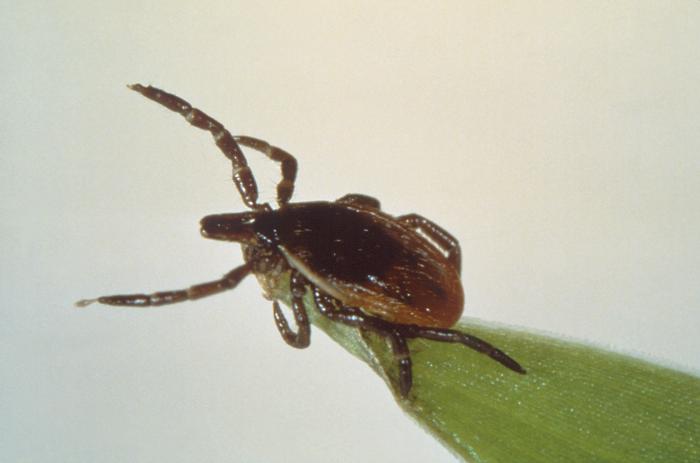University of Pittsburgh at Johnstown associate professor Dr. Jill Henning’s multi-year study on the risk of Lyme disease in western Pennsylvania concluded that one in three deer ticks carry the Lyme bacteria.
The report, titled Effective Techniques in the Definitive Diagnosis of Lyme Disease, was published on Aug. 8, 2016, in the SciMedCentral JSM Tropical Report.

DNA testing of 500 deer ticks was conducted by Henning and a team of six Pitt-Johnstown students.
“This is an active area,” she said. “A lot of people are into hiking and biking and other outdoor activities. There isn’t a lot of research regarding ticks and their association with Lyme disease in this part of Pennsylvania.”
Until now.
Henning’s study results show a need for outreach about the local risk of contracting Lyme disease.
Lyme disease can cause reoccurring joint pain and neurological issues if left unchecked. But for those who take steps to check for bites quickly after encountering ticks, it can make a big difference, he said.
She has reached out to pediatricians and veterinarians, so that parents and pet owners are educated about the concern.
“If there is a 33-percent chance of acquiring Lyme disease if you are bitten, that’s something they need to know,” Henning said.
The research allowed biology students to gain experience both in the field and in a lab setting, Henning said.
The team focused its research on “questing” deer ticks – those hunting for a new host – in Bedford, Cambria, Indiana and Westmoreland counties.
Student researchers acquired a state Game Commission permit to collect the tiny arachnids inside game land property, areas that are typically havens for mammals like mice, rabbits and deer that ticks feed on throughout their lifespan, she said.
Related:
- Lyme disease: Pennsylvania accounts for 40% of cases to date, health officials highlight prevention
- Zika: 1st sexually transmitted case reported in Pennsylvania
- Lyme Disease Task Force report: Recommendations for Pennsylvania
- Lyme disease ticks found in all Pennsylvania counties
- Zika virus: Laboratory acquired case reported in Pittsburgh area


I have Lyme Disease and I need to get across to the public that it is possible to be bitten by more than one tick. I was covered in the “Bulls Eye”” rash.My P.C.P. did not know what it was(I am assuming) due to the amount of bites so I returned to the infested home many times over a 8 month period of time and continually had numerous bites. I later found out the horses on the farm were all infected by the ticks.I am still ill 8 years later. Be advised Lyme may not be the only thing these ticks are sharing.